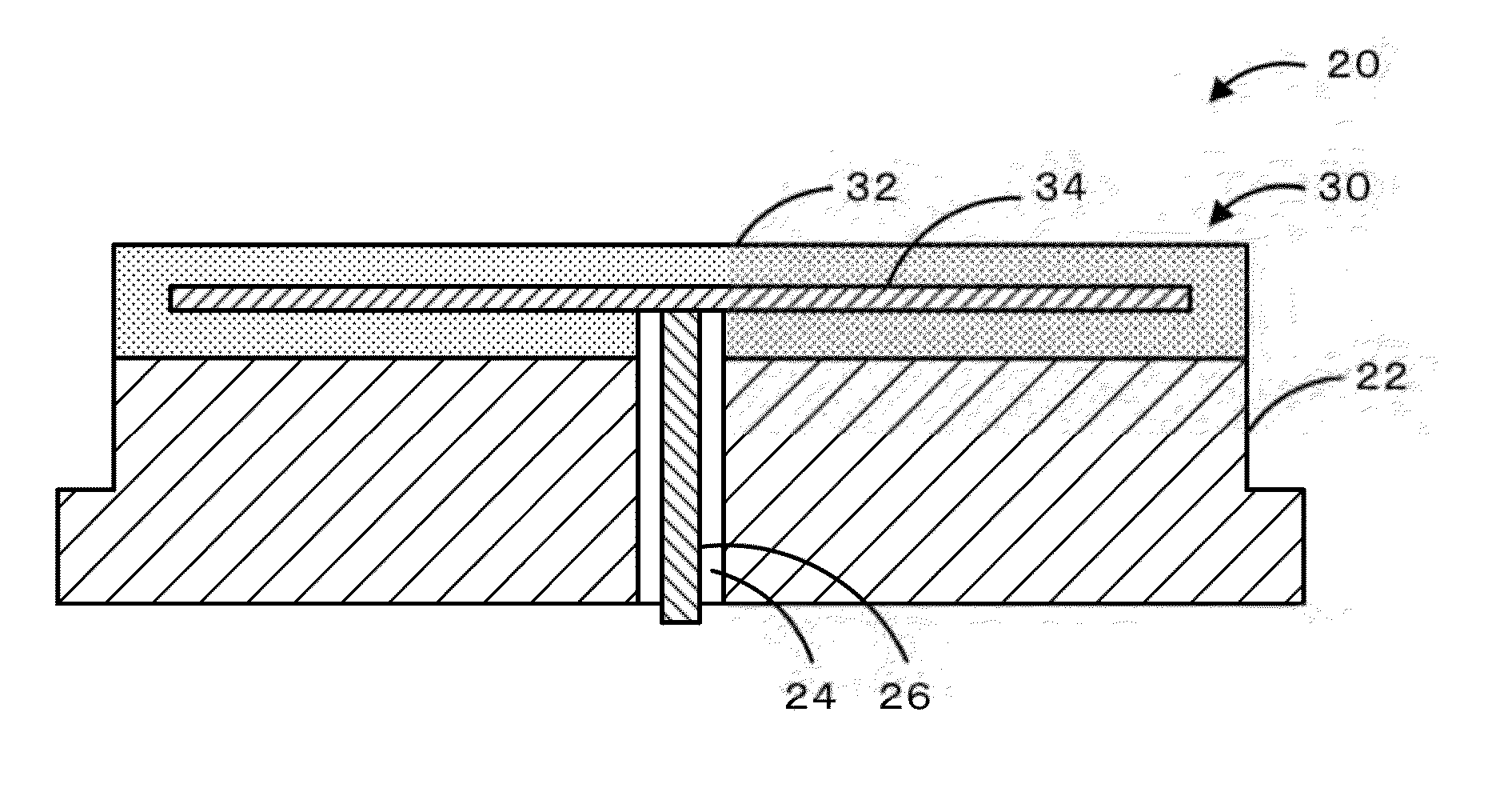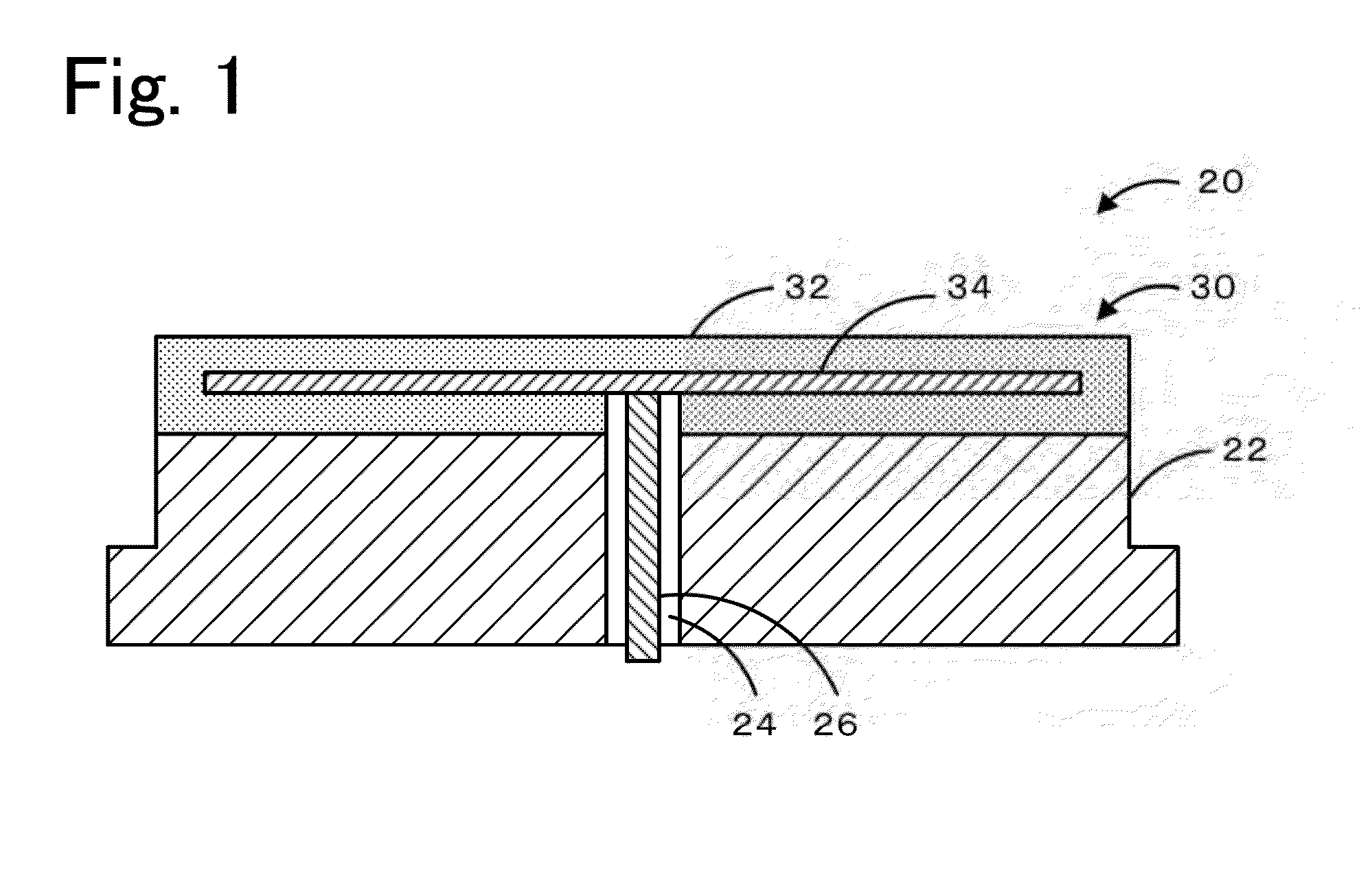Ceramic member, member for semiconductor manufacturing apparatus, and method for manufacturing ceramic member
- Summary
- Abstract
- Description
- Claims
- Application Information
AI Technical Summary
Benefits of technology
Problems solved by technology
Method used
Image
Examples
examples
[0042]Preferred applications of the present invention will be described below. Experimental Examples 1 to 27 describe the results of the more specific study on ceramic bases. In Experimental Examples 1 to 16 and 23 to 27, at least 99.9 mass % pure commercial products having an average particle size of 1 μm or less were used as a MgO raw material and an Al2O3 raw material, and a 99 mass % pure commercial product having an average particle size of 1 μm or less was used as an AlN raw material. In Experimental Examples 17 to 22, a 99.4 mass % pure commercial product having an average particle size of 3 μm was used as a MgO raw material, a 99.9 mass % pure commercial product having an average particle size of 0.5 μm was used as an Al2O3 raw material, and the commercial product having an average particle size of 1 μm or less used in Experimental Examples 1 to 16 and 23 to 27 was used as an AlN raw material. Experimental Examples 1 to 4, 7 to 17, 21, and 23 to 27 corresponded to examples o...
experimental examples 1 to 16 and 25
Compounding
[0043]The MgO raw material, the Al2O3 raw material, and the AlN raw material were weighed at the mass percentages listed in Table 1 and were wet-blended in an isopropyl alcohol solvent in a nylon pot using alumina rounded stones having a diameter of 5 mm for four hours. After blending, the resulting slurry was removed and was dried in a nitrogen stream at 110° C. The dried product was passed through a 30-mesh sieve to yield a mixed powder. The mixed powder had a Mg / Al molar ratio of 2.9.
Molding
[0044]The mixed powder was uniaxially pressed at a pressure of 200 kgf / cm2 to form a disc-shaped compact having a diameter of 50 mm and a thickness of approximately 20 mm. The disc-shaped compact was placed in a graphite mold for firing.
Firing
[0045]The disc-shaped compact was subjected to hot-press firing to manufacture a ceramic base. The hot-press firing was performed at a pressing pressure of 200 kgf / cm2 at a firing temperature (maximum temperature) listed in Table 1 in an Ar atm...
experimental example 22
[0047]A mixed powder was prepared in a compounding process in the same manner as in Experimental Example 1 except that the MgO raw material and the Al2O3 raw material were weighed at the mass percentages listed in Table 1. The mixed powder was uniaxially pressed at a pressure of 100 kgf / cm2 to form a cylindrical compact having a diameter of 20 mm and a thickness of approximately 15 mm. The compact was subjected to a CIP forming process at 3000 kgf / cm2. A graphite crucible having a lid was charged with the mixed raw materials. The compact was then buried in the mixed raw materials. The cylindrical compact was fired at normal pressure in a firing process to manufacture a ceramic base. In the firing process, the cylindrical compact was fired at the firing temperature (maximum temperature) listed in Table 1 in an Ar atmosphere to the completion of firing. The holding time at the firing temperature was four hours.
[0048][Evaluation]
[0049]The materials prepared in Experimental Examples 1 t...
PUM
| Property | Measurement | Unit |
|---|---|---|
| Percent by mass | aaaaa | aaaaa |
| Percent by mass | aaaaa | aaaaa |
| Percent by mass | aaaaa | aaaaa |
Abstract
Description
Claims
Application Information
 Login to View More
Login to View More - R&D
- Intellectual Property
- Life Sciences
- Materials
- Tech Scout
- Unparalleled Data Quality
- Higher Quality Content
- 60% Fewer Hallucinations
Browse by: Latest US Patents, China's latest patents, Technical Efficacy Thesaurus, Application Domain, Technology Topic, Popular Technical Reports.
© 2025 PatSnap. All rights reserved.Legal|Privacy policy|Modern Slavery Act Transparency Statement|Sitemap|About US| Contact US: help@patsnap.com



